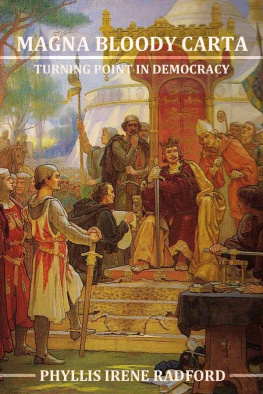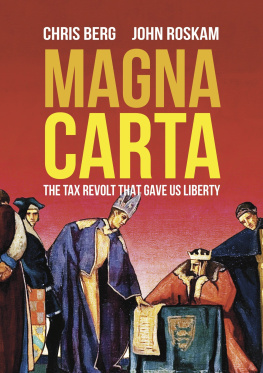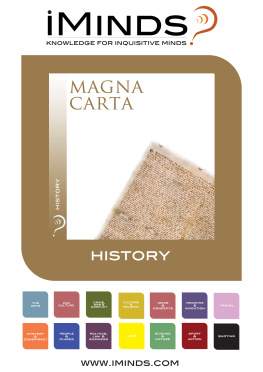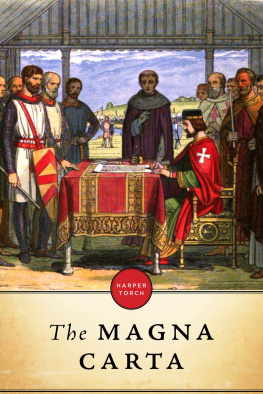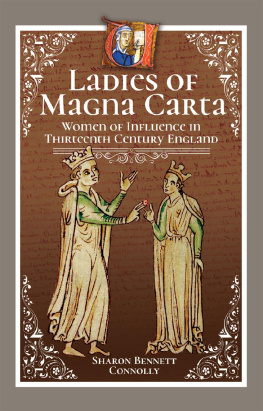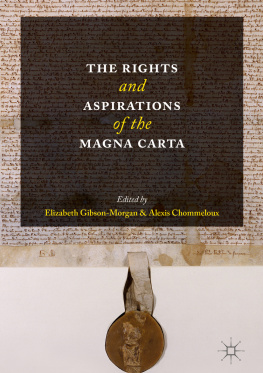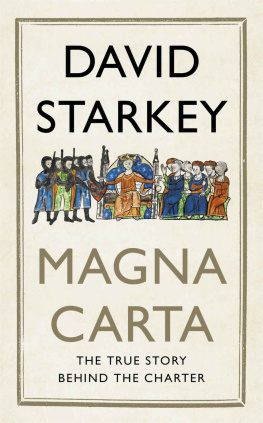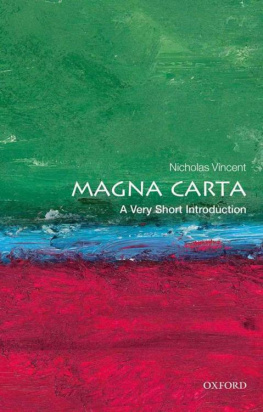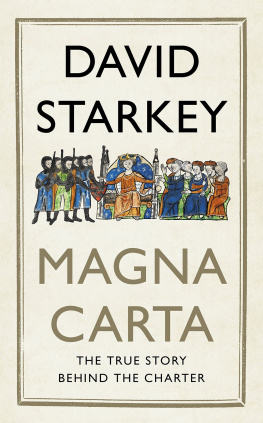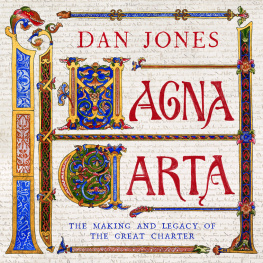Magna Bloody Carta:
Turning Point in Democracy
Phyllis Irene Radford
Book View Caf Edition
October 9, 2012
ISBN: 978-1-61138-197-9
Copyright 2012 Phyllis Irene Radford
www.bookviewcafe.com
Introduction:
I am a history geek. I freely admit it. Why else would Iwork so hard to major in history and walk out of a prestigious liberal artscollege with a B.A? Collecting historical trivia is one of my vices. I evenworked as assistant curator at a house museum in Oregon for four years. But Imalso a generalist. I know a little bit about a lot of things. All eras arefascinating, but there is something about medieval life that sucks me in andengages my imagination like no other.
So, when a copy of the Magna Cartaone of four originalsextantmade a grand tour of the United States I made a point to visit it at theOregon Historical Society in Portland, Oregon.
As a member of the society I purchased advance tickets to aprivate viewing for members only the day before it opened to the public. I anda few thousand of my fellow enthusiasts stood in line for hours before thedoors opened. I touched the ticket in my pocket like a magic talisman every tenminutes, making sure I hadnt lost it (Ive been known to do such things), orhad my pocket picked by a desperate grad student.
Eventually a hush rippled through the crowd. The massivedouble doors opened. This was not a movie or sporting event where the crowdwould anxiously surge forward to claim the best seats. These were respectfulfans. We proceeded tentatively into the lobby of the new OHS building indowntown Portland. We were ushered, slowly, into orderly lines and allowed toenter the special exhibit hall one by one. More standing in line. Step by stepwe snaked toward our goal.
I noticed that the lights within the hall were dimmer, themoment I crossed the threshold. Small display cases lined the marked alleywaythat had been set out in a maze. We saw garments and tools retrieved fromarcheological digs and carefully preserved. Grand but faded tapestries behindglass told stories of hunts and battles. Carefully edited texts told the storyof the political and economic life in early 13th C. England. Theevents leading up to the signing of the Great Charter burst free of the shroudof distance and misconception.
With each turn through the maze the lights became dimmer,and our perceptions shrank to the level of a circle of candle light. Withoutthe noise and bustle of modern life, I felt as if I had stepped back in timeand I was watching history unfold.
A small sign explained that as we moved inward our eyesgradually adjusted to the lower light levels necessary to preserving theparchment and ink. A special case had been designed to seal the document in theperfect temperature and humidity to mitigate the effects of time.
And then I was there, standing in front of a slanted glasscover, my mouth gaped in awe at the thought of how close I stood to one of themost significant pieces of western European history, culture, and government.As US citizens we are direct inheritors of the innovative concepts laid out inthose painfully constructed sentences of Latin.
I forgot to breathe.
Then security urged me to keep moving, give someone else achance to bask in the wonder of history come to life. I know I wasnt the onlyone who stood awestruck to gaze upon this simple document that changed so muchduring its own time and holds a lasting influence on modern government.
This was nearly thirty years ago, but the moment has stayedwith me.
When the time came for me to write an historical fantasyabout the events leading up to the signing of the Magna Carta I consulted mybrother, Lt. Colonel (retired) James H. Radford, PhD., Professor of PoliticalScience. His response? Read the bloody thing and form your own opinion. Yep,hes a teacher.
As an amateur historian I had to add that the documentshould be read in the context of the era when it was written. I dragged out myneglected historian credentials and did just that.
And I included a copy in the back of Guardian of the Trust, Merlins Descendants #2, now available atthe Book View Caf along with the other four books in the series:http://www.bookviewcafe.com/bookstore/book/guardian-of-the-trust/
Then several monthsago, a rumor swept across the internet that some ultra-conservative politicianshad shouted in public: The U.S. Constitution isnt good enough. We need to goback to the Magna Carta. Our founding fathers were well aware of the MagnaCarta and its significance. Many of the concepts of our U.S.Constitution derived from it. But is the Magna Carta better than theConstitution?
My first reactionwas um Have you even read the Magna Carta? Not the version depicted in themovie rendition of Robin Hoodportrayed by Russell Crowe. The real Magna Carta.
I have read itin translation. My Latin is rudimentary atbest.
So I embarked on aseries of blogs in which I took the Magna Carta, clause by clause, and threw ina few of my own comments, but mostly made this amazing document fullyaccessible to readers in modern translation on a public forum. Now I havegathered those rambling blog posts into this book.
Hollywood andrevisionist historians have turned the Magna Carta into a declaration of therights of the common man.
It is in factlittle more than an economic peace treaty between King John and his barons,with the Church making the third side of a triangle in the civil war. Pleaseremember that separation of Church and State is a very modern concept, aheinous idea to the medieval mind.
Passages markedwith * indicate the clause was removed from later editions, mostly when thePope declared them invalid. A + indicates the paragraph was edited from theoriginal in later editions. The numbering of the paragraphs is also a lateraddition.
Opening Paragraph
The openingparagraph is mostly a list of names of those present at Runnemede that summermorning in 1215. It is interesting to note the number and variety of peoplerepresented. Those with titles listed all of their honors so there could be nomistake who they were and their authority to affix their names to such animportant document.
John, by the grace ofGod, King of England, Lord of Ireland, Duke of Normandy and Aquitaine, andCount of Anjou, to the archbishops, bishops, abbots, earls, barons, justiciars,foresters, sheriffs, stewards, servants, and to all his bailiffs and liegesubjects, greeting. Know that, having regard to God and for the salvation ofour soul, and those of all our ancestors and heirs, and unto the honour of Godand the advancement of holy church, and for the reform of our realm, by adviceof our venerable fathers, Stephen Archbishop of Canterbury, primate of allEngland and Cardinal of the holy Roman Church, Henry Archbishop of Dublin,William of London, Peter of Winchester, Jocelyn of Bath and Glastonbury, Hughof Lincoln, Walter of Worcester, William of Coventry, Benedict of Rochester,bishops; of master Pandulf, Subdeacon and member of the household of our lordthe Pope, of brother Aymeric [Master of the Knights of the Temple inEngland], and of the illustrious menWilliam Marshall Earl of Pembroke, William Earl of Salisbury, William Warl ofWarenne, William Earl of Arundel, Alan of Galloway [Constable of Scotland], Warren Fitz Gerald, Peter Fitz Herbert,Hubert de Burgh [Seneschal of Poitou],Hugh de Neville, Matthew Fitz Herbert, Thomas Basset, Alan Basset, PhilipdAubigny, Robert of Roppesley, John Marshall, John Fitz Hugh, and others, ourliegemen.
Clause #1
The original document does not have numbered clauses. Thenumbers were added later for easier editing and referencing. In many placessimilar issues are lumped together, but not always. This demonstrates thecompilation-by-committee. Some historians feel that the first clause addressingChurch rights was a last minute addition. But since parchment is not easy tocut and paste to rearrange data, it might have been added late to the draft,but not the final copy.
Next page
